This vegan Thai red curry paste recipe is brimming with warm, fresh flavors of citrus, ginger, garlic, chili, and spices with no added oil. After tasting this healthy, homemade curry paste for the first time, you'll never purchase expensive jars again.
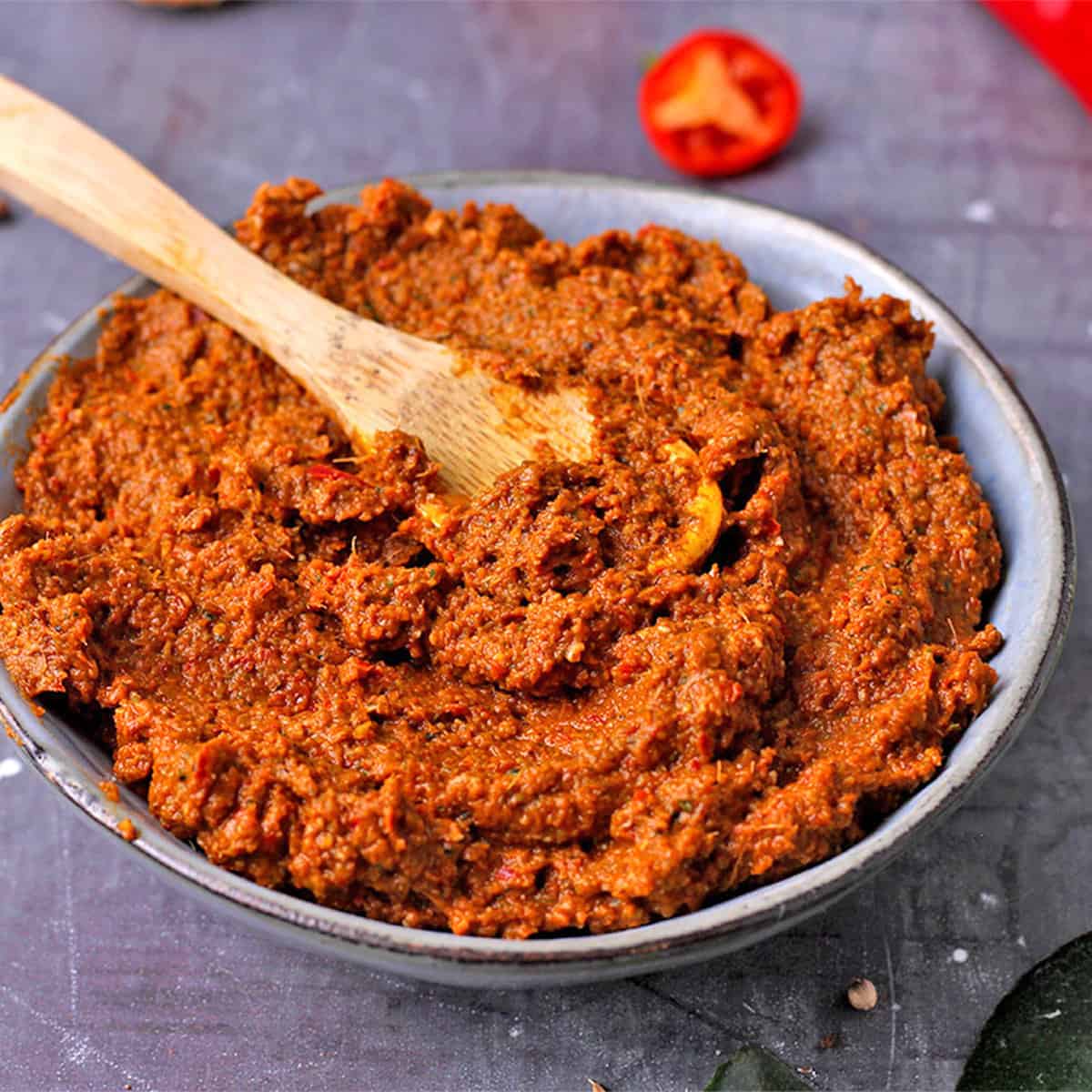
Red Thai curry paste is a versatile and foundational base for many recipes, including classic Thai veggie curry and creamy mango curry.
Table of Contents
Why You'll Love This Recipe
- Curry paste is a time saver because all the spices and aromatics are all right there, ready to be dropped in.
- There is NO comparison between making your own curry paste and buying it.
- Homemade means complete quality control of the ingredients and can adjust to your spice tolerance.
- Perfect for batch cooking and freezing.
Ingredients, Notes, and Substitutions
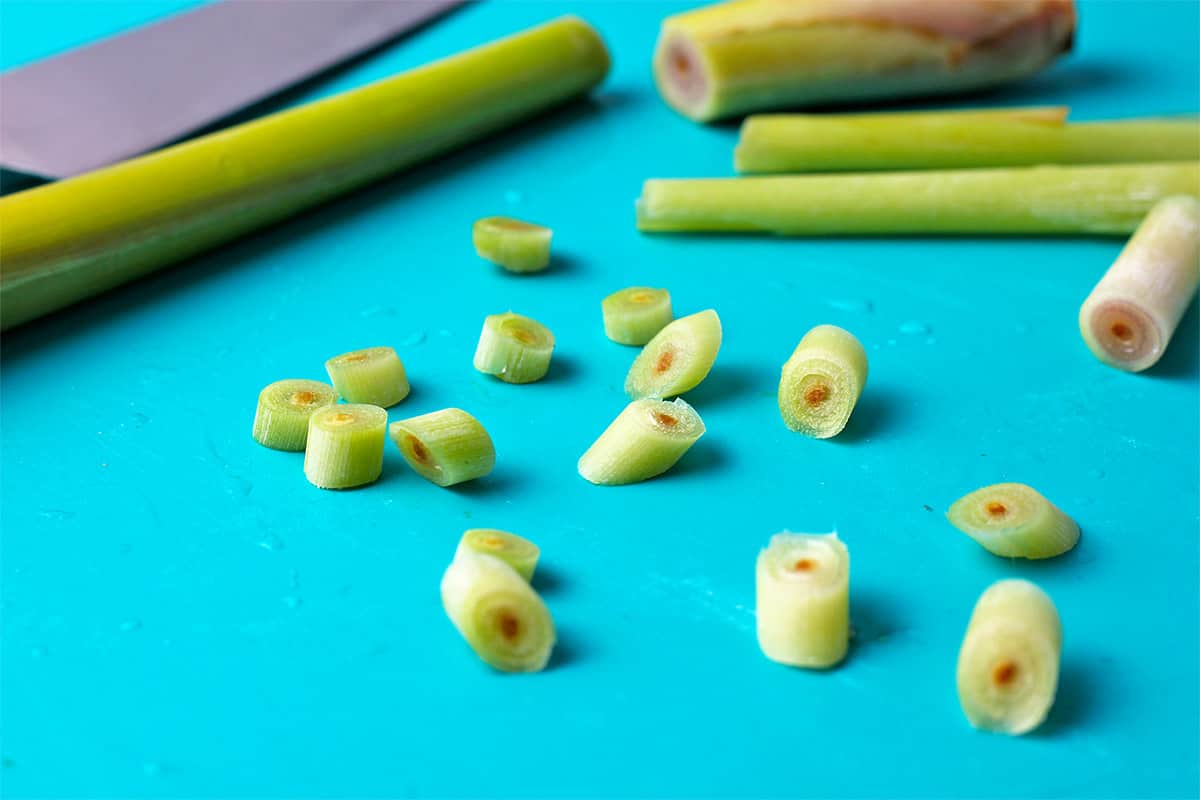
Coriander seeds, cumin seeds, white peppercorns. Toasting whole spices intensifies flavors and brings out their essential oils. Use 1 ½ teaspoons of ground spices as a substitute.
Dried red chili peppers. I used 10 dried, medium-sized chilis. You can adjust the amount if you use dried bird’s eye or super-hot chilis or want a milder flavor. Reduce the spiciness by breaking the chilies and shaking the seeds out.
Kaffir lime leaves. Kaffir lime leaves, dried or fresh, have an intense citrus flavor. My original recipe used dried leaves. Lately, I’ve been using fresh leaves because I have access to them.
Fresh ginger and fresh garlic. Both of these classic aromatics add bold flavors and depth and are added raw.
Lemongrass. Yes, lemongrass is grass. They are woody stalks about the size of a green onion.
Cilantro (coriander). 5 sprigs with leaves and tender stems for a little bit of peppery flavor. The cilantro also has a bit of moisture that helps you build a smoother paste.
Shallots. I particularly like the mellower flavor of shallots. Use scallions (green onions) or red onions without significantly impacting the flavor.
Lime zest. Depending on their size, it takes 2-3 limes to get 2 honest tablespoons of zest. It’s best practice to use organic (unwaxed) citrus fruits whenever you are adding the zests.
Fresh red chilis. Don't skip using fresh chilis. They add flavor, color, and moisture to blend everything together. Remove the seeds and core to decrease the heat. If you want to make a milder paste, you can use a red pimento pepper or even half a red bell pepper.
Please see the recipe card at the bottom of this post for the complete list of ingredients with measurements plus recipe instructions.
Recipe Variations
If you want to experiment a bit, a teaspoon of miso paste adds a sweet, umami flavor. A few Thai basil leaves are also nice.
Step-by-Step Instructions
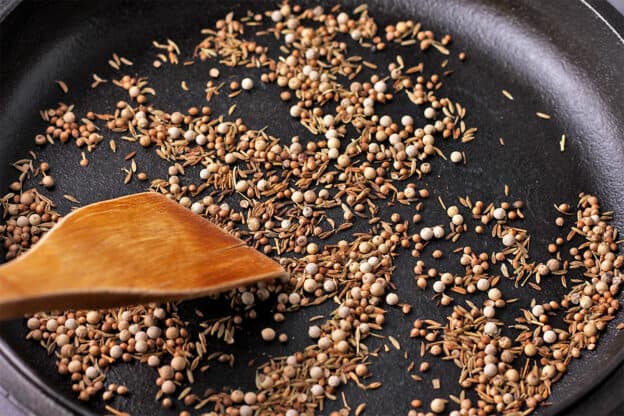
Step 1: Toast the whole spices for 1-2 minutes. Stir continuously.
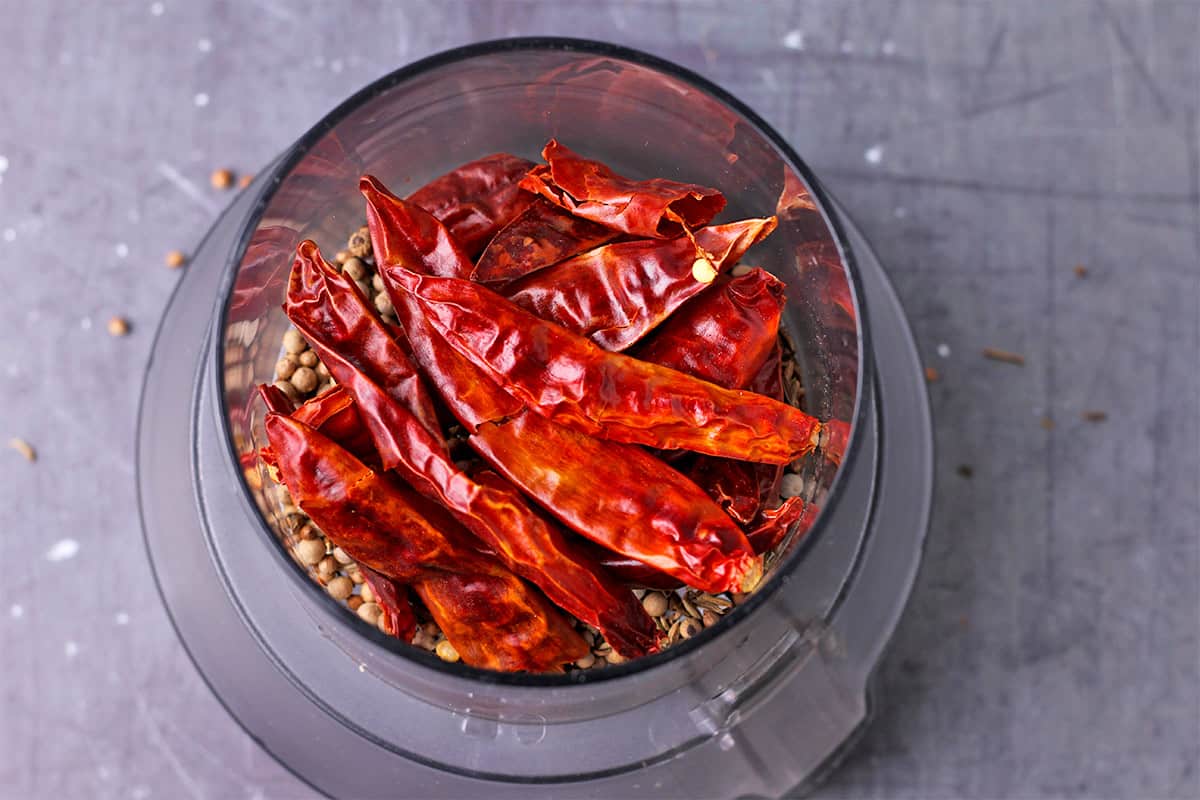
Step 2: Transfer the whole spices, dried chilies, and dried lime leaves to a spice grinder or food processor. Grind to a fine powder.
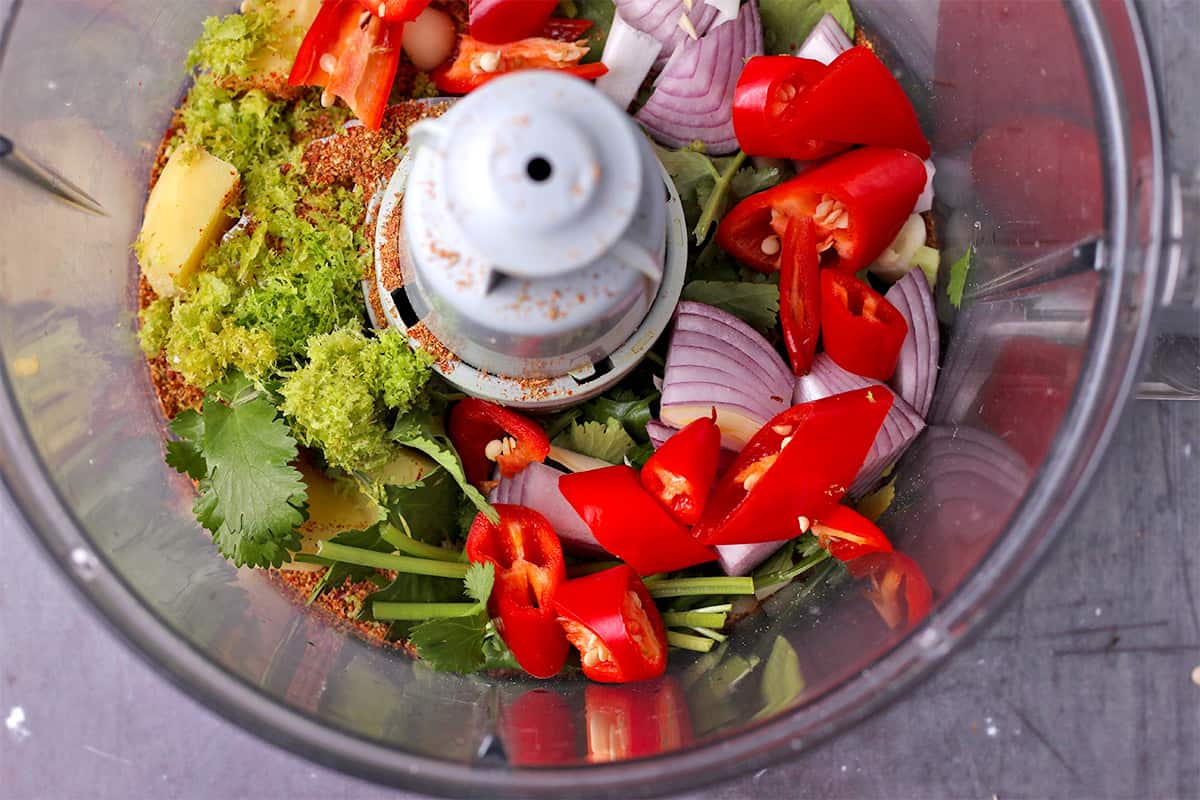
Step 3: Add the spices and the rest of the ingredients to a food processor.
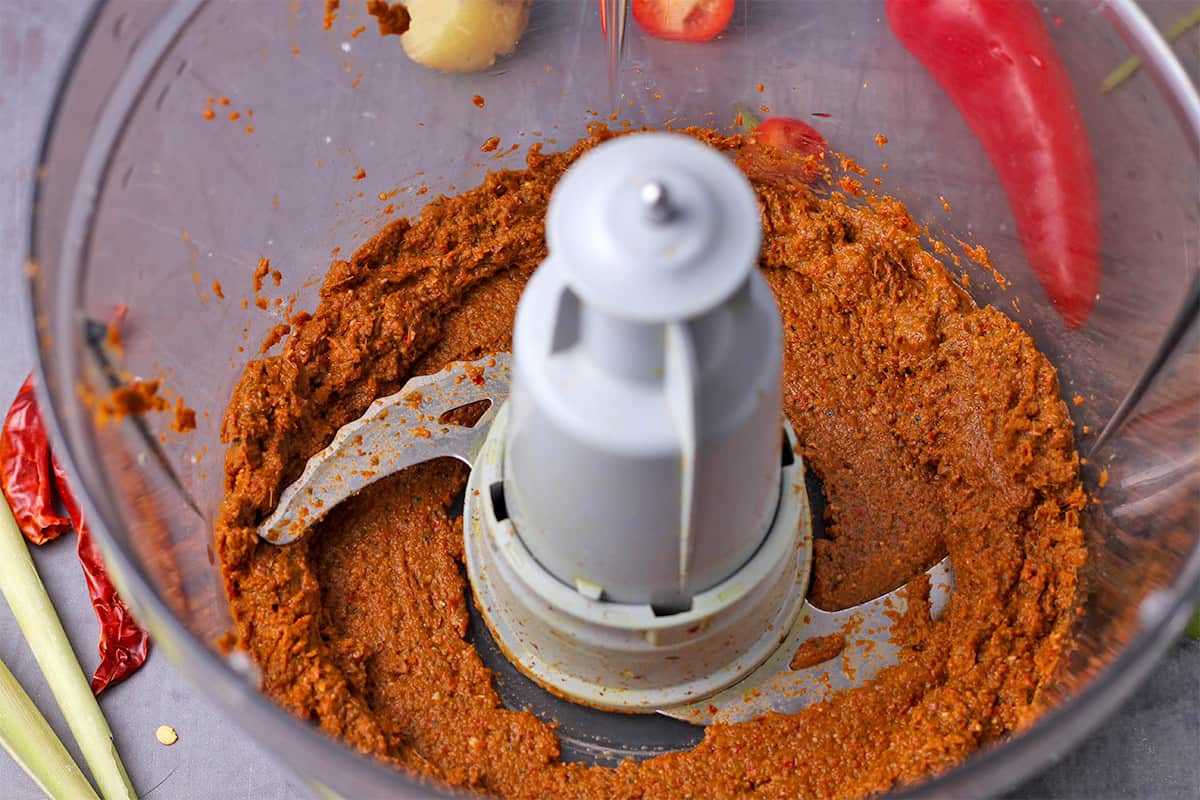
Step 4: Blend for 3-4 minutes to a smooth paste.
Equipment and Options
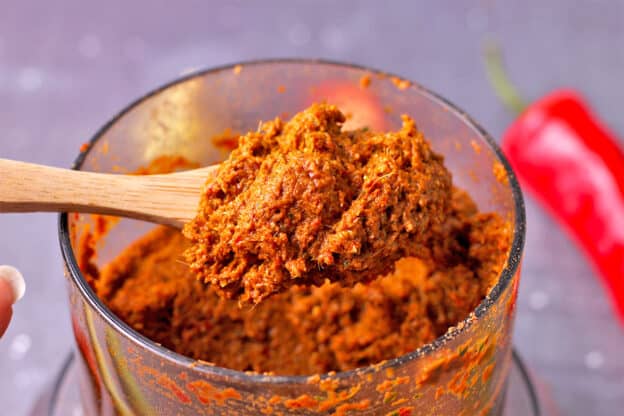
Pestle and mortar. If you’re feeling adventurous or have some stress to relieve, grab your pestle and mortar and get busy.
For the best results, start by adding the toasted spices and dried chilis to the mortar (the bowl) and pound them using the pestle (the club). Keep on adding ingredients from the hardest to the softest. Keep on pounding, grinding, and working until you get a smooth paste.
Food processor or blender. If you want to save time and get a smoother blend, use your food processor or blender. Be sure that you use a spice or coffee grinder to grind up the coriander, cumin, peppercorns, and dried chilis first.
Spice grinder. I often use a smaller spice grinder for making curry pastes, tahini, or date paste. The trick is not to overload it. Revert to the pestle and mortar technique. Add the spices, then add a few ingredients from the hardest to the softest. You are creating 'room' as each addition breaks down.
How to Use Red Curry Paste
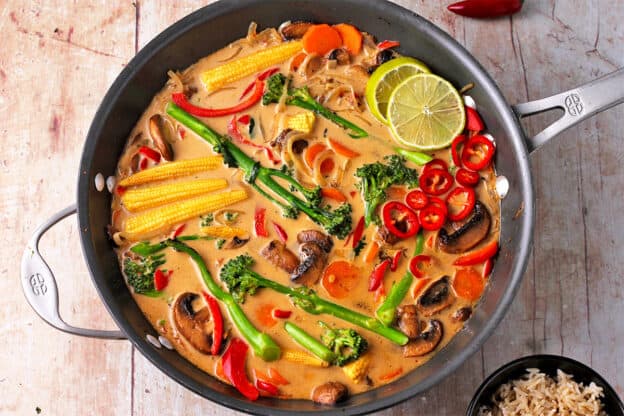
Homemade red curry paste adds a bright flavor bomb to soups, sauces, and curries. Add it to a sauce of light coconut milk (or coconut milk substitute), soy sauce, lime juice, maple syrup, or coconut sugar for a quick curry sauce or soup base. Just add veggies like bell peppers, baby corn, bamboo shoots, snow peas, green beans, or a bag of frozen stir-fry veggies or crispy tofu, and you have a quick meal.
Frequently Asked Questions
Store red curry paste in an airtight container in the refrigerator for a week. Freeze it in small portions in ice cube tray slots for 3 months or more. Place the tray in a freezer bag to prevent freezer burn. Fetch them from the freezer, add them to your curry and sauces, and allow them to thaw as they cook.
Fresh or dried curry leaves can be substituted for lime leaves. Depending on your recipe, you can also add extra lemongrass or lime zest. For Thai red curry paste, I recommend a combination of lime zest with lemon zest or lemongrass.
Most Thai red curry paste is not vegan and contains shrimp paste, oyster sauce, fish sauce, or other non-vegan ingredients. That's why it's important to read labels or make your own.
Related Vegan Recipes and Posts
Do you have a question or recipe request or need a cooking tip? Leave a comment below or contact Denise. I’m here to help! If you want more healthy vegan recipes, please subscribe to my newsletter or follow me on Facebook or Pinterest for the latest updates.
If you make this recipe, please leave a ⭐⭐⭐⭐⭐ rating. It’s much appreciated!
👩🏻🍳 Recipe
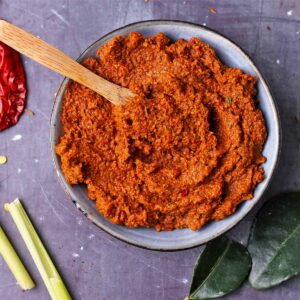
Vegan Thai Red Curry Paste
Rate this Recipe:
Equipment
- 1 spice grinder or pestle and mortar
- 1 food processor or high-speed blender
Ingredients
- 1 tablespoon coriander seeds - 1 teaspoon ground coriander
- 1 tablespoon cumin seeds - 1 teaspoon ground cumin
- 1 tablespoon white peppercorns - 1 teaspoon ground
- 10 medium dried red chilis
- 3 medium kaffir lime leaves - fresh or dried
- 2 tablespoon ginger - roughly chopped
- 4 cloves garlic - peeled and cut in half
- 2 stalks lemongrass - bulb removed, peeled, and sliced
- 5 sprigs cilantro - (coriander)
- 3 tablespoon shallots - chopped (or red onion)
- 2 tablespoons lime zest - 2-3 fresh limes
- 2 medium red chilis - diced (remove the seeds if you don't want too much heat)
Instructions
- Toast the coriander seeds, cumin seeds, and white peppercorns in a small skillet over medium heat for 1-2 minutes. Stir constantly to prevent burning.
- Break dried chilis in half to remove the seeds to reduce the spiciness if desired.
- Transfer the spices, dried chilies, and dried kafir leaves (if using dried leaves) to a spice grinder. Grind the spices until they are broken down into fine pieces. You can also use a pestle and mortar.
- Add the rest of the ingredients plus the ground, whole spices to a food processor and blend until smooth. You can also use your spice grinder or pestle and mortar, adding the densest ingredients first and adding more ingredients until you have a smooth paste.
- Makes about 1 cup.
Video
Notes
- Store red curry paste in the refrigerator for 1 week in a tightly sealed container. You can also freeze it in small portions for up to 3 months.
- If possible, use unwaxed, organic limes for zest to avoid pesticides.
- Use 1 teaspoon of ground white pepper, coriander, or cumin to substitute the whole spices. Only toast whole spices.
- Use caution with handling dried chilies. Wear gloves or wash your hands immediately after touching them. Try to avoid touching your face, in particular, your eyes.
- Be sure to grind the dry spices, chilis, and dried lime leaves (if using) first. They won't break down properly in a large container like a food processor or if added to the rest of the ingredients.
Nutrition
Nutritional information is an estimation only.


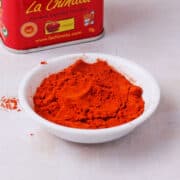
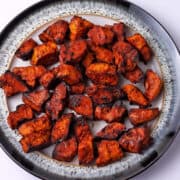

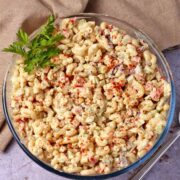
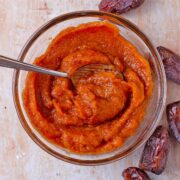

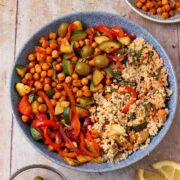

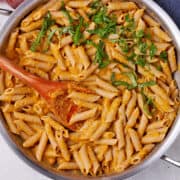
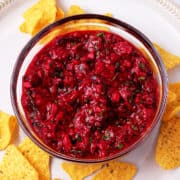
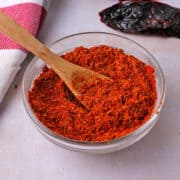
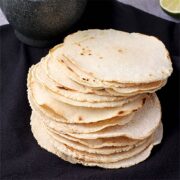
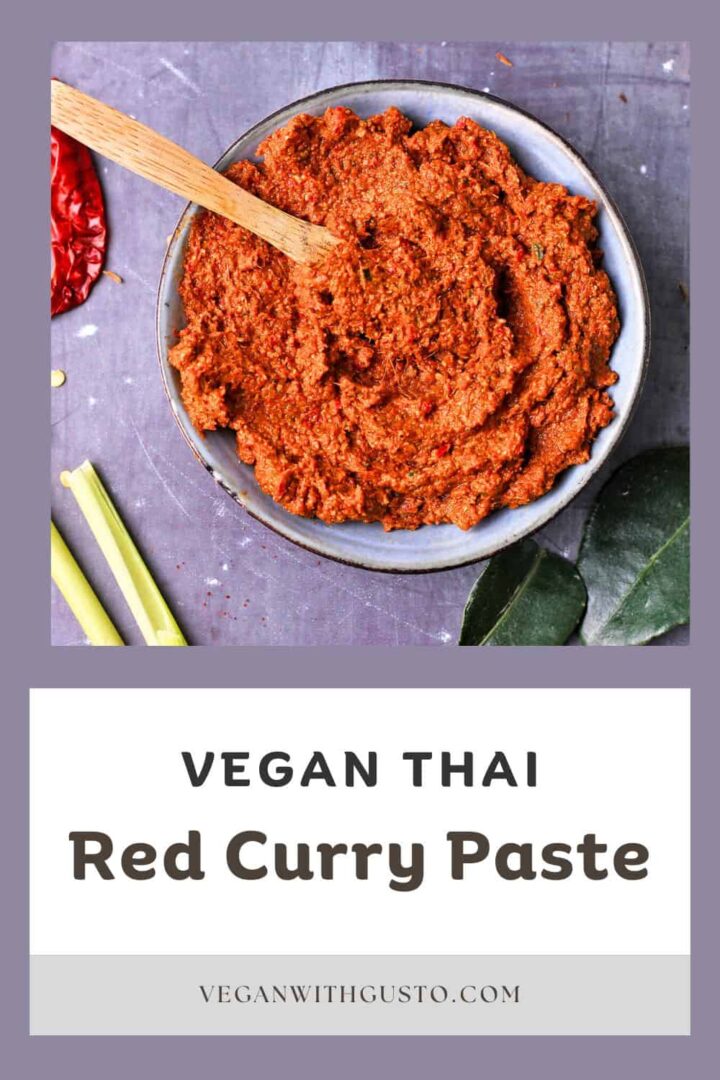
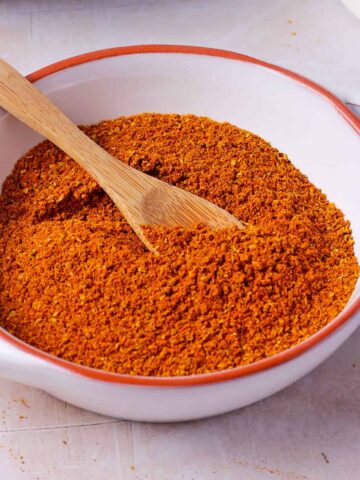
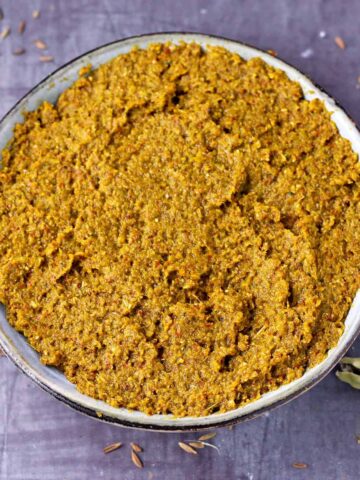
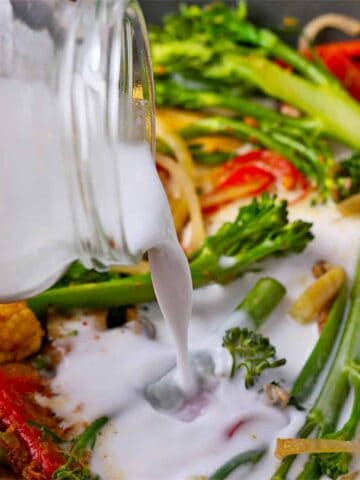
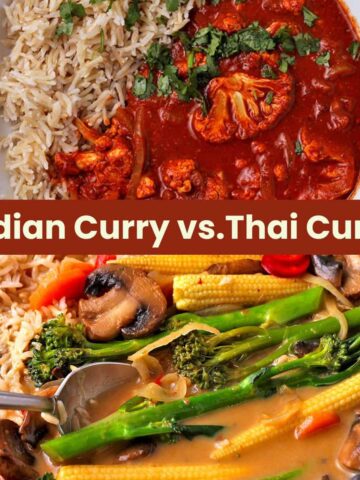
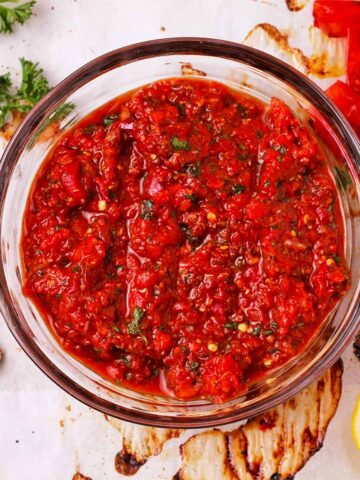

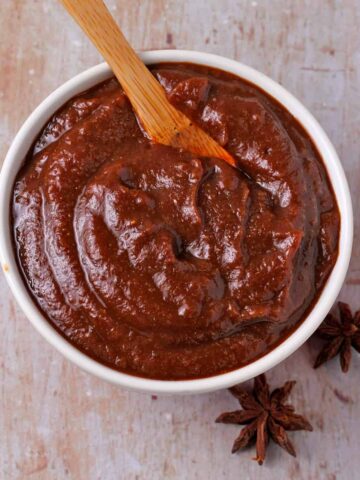
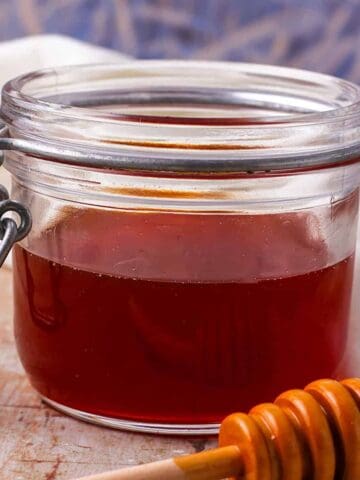

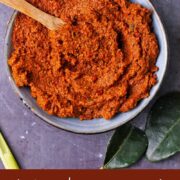
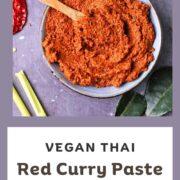
Leave a Reply